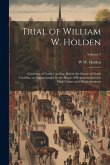The story of the Holden Motor Company is a remarkable chapter in Australian industrial history, symbolizing innovation, resilience, and the rise and fall of an automotive icon. Here's an overview of Holden's journey: Origins: Saddlery Beginnings (1856-1908) The company began in 1856 in Adelaide, South Australia, as a saddlery business. Founded by James Alexander Holden, the company initially focused on crafting horse saddles, harnesses, and leather goods. By the turn of the 20th century, Holden had established itself as a successful business. Transition to Automotive (1908-1931) With the advent of the motorcar, Holden adapted to the changing market. In 1908, James Holden's grandson, Edward Holden, joined the business, introducing a focus on the burgeoning automotive industry. By 1917, during World War I, the company began building vehicle bodies due to restrictions on importing fully assembled cars. By 1923, Holden was producing car bodies for major manufacturers, including Ford, Chevrolet, and Chrysler. In 1931, General Motors (GM) acquired the company, forming General Motors-Holden's Ltd. This acquisition solidified Holden's role as GM's Australian subsidiary. The First Australian Car (1948) The post-war period marked Holden's rise as a national icon. In 1948, Holden unveiled the 48-215 (commonly known as the "FX"), the first mass-produced car designed and manufactured in Australia. Marketed as "Australia's own car," it became a symbol of national pride. Golden Era (1950s-1970s) Holden dominated the Australian market during this period, holding nearly 50% market share at its peak. Iconic models like the FJ Holden, EH Holden, and Kingswood became household names, reflecting the Australian way of life. The brand was known for robust, reliable vehicles suited to Australia's rugged conditions. Holden also expanded into motorsport, particularly with the introduction of the Torana and the high-performance Commodore, earning a loyal following among racing enthusiasts. Challenges and Globalization (1980s-2000s) From the 1980s onward, Holden faced increasing competition from Japanese and European automakers. The Australian government's reduction of tariffs on imported vehicles added pressure. Holden responded by diversifying its lineup, producing small cars like the Barina and introducing international models rebadged under the Holden name. Despite these efforts, its reliance on large sedans, such as the Commodore, made it vulnerable as consumer preferences shifted toward SUVs and smaller vehicles. Decline and Factory Closures (2010s) By the 2010s, Holden faced declining sales, high manufacturing costs, and shrinking demand for traditional sedans. In 2013, GM announced it would cease Holden's local manufacturing by 2017, marking the end of an era. The final car produced in Australia was a Holden Commodore on October 20, 2017, at the Elizabeth plant in South Australia. Holden transitioned to an importer of vehicles, primarily rebadged GM models, but struggled to compete with other brands. End of the Road (2020) In February 2020, GM announced it would retire the Holden brand entirely, citing the inability to make the business sustainable in the long term. The decision marked the end of 164 years of Holden's presence in Australia. By the end of 2020, Holden dealerships closed, and the brand faded into history. Legacy Holden remains a cultural icon in Australia, remembered for its contributions to automotive innovation, its role in Australian motorsport, and its influence on the nation's identity. Enthusiasts and collectors continue to celebrate Holden vehicles, ensuring that its legacy lives on in Australian history.
Hinweis: Dieser Artikel kann nur an eine deutsche Lieferadresse ausgeliefert werden.
Hinweis: Dieser Artikel kann nur an eine deutsche Lieferadresse ausgeliefert werden.


![Anno Tertio & Quarto Victoriæ Reginæ, Magnæ Britanniæ Et Hiberniæ [microform]: at the Parliament Begun and Holden at Westminster, on the Fifteenth Day Anno Tertio & Quarto Victoriæ Reginæ, Magnæ Britanniæ Et Hiberniæ [microform]: at the Parliament Begun and Holden at Westminster, on the Fifteenth Day](https://bilder.buecher.de/produkte/65/65638/65638264m.jpg)





